Moscow is many-sided and grandiose, each time it turns to the traveler with thousands of different sides. Here, the multicolored domes of Orthodox churches coexist with monumental skyscrapers in the Stalinist Empire style. The rich estates of the aristocratic families of the Russian Empire stand next to trendy restaurants and clubs, the spiers of the glass skyscrapers of the business districts sparkle against the backdrop of the picturesque Kutuzovsky Prospekt.
Moscow has a huge number of cultural objects - more than 400 museums, about a thousand monuments, 130 theaters and dozens of concert halls. Most of the events of the social life of the country, from premieres to international exhibitions, take place in the capital. You need to come to Moscow for a long time to feel the spirit and energy of this dynamic city.
What to see and where to go in Moscow?
The most interesting and beautiful places for walking. Photos and a short description.
- Moscow Kremlin and Red Square
- St Basil's Church
- Zaryadye Park
- Moscow City
- Cathedral of Christ the Savior
- Novodevichy Convent
- Church of the Ascension in Kolomenskoye
- Cathedral of the Immaculate Conception of the Blessed Virgin Mary
- Museum-Reserve Tsaritsyno
- Kolomna Palace
- Kremlin in Izmailovo
- Manor Kuskovo
- Krutitsy Compound
- Grand Theatre
- State Tretyakov Gallery
- Armory and Diamond Fund
- State Historical Museum
- Moscow Nikulin Circus on Tsvetnoy Boulevard
- Pushkin Museum of Fine Arts
- Bunker 42 on Taganka
- Victory Park on Poklonnaya Hill
- Sparrow Hills
- Sports complex Luzhniki
- Moscow subway
- Moscow Zoo
- VDNH
- Ostankino Tower
- Triumphal gate
- Stalin skyscrapers
- State Department Store (GUM)
- Street Old Arbat
- Hermitage Garden
- MUZEON art park
- Art Cluster Red October
- Gorky Park
Moscow Kremlin and Red Square
The most recognizable and visited places in the Russian capital. The red towers of the Kremlin crowned with stars are an established brand, a symbol of Moscow. Since the 12th century, the Kremlin has served as a defensive structure; over the centuries, it has been repeatedly burned and rebuilt. Red Square has repeatedly become the site of important state events. People's meetings, fairs, parades, and various cultural events were held there.
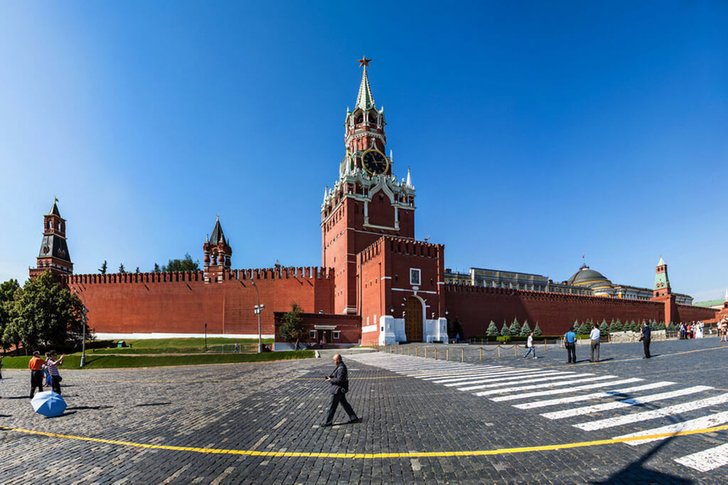
St Basil's Church
The cathedral was founded by order of Ivan the Terrible as gratitude to the Lord for help in the capture of Kazan. Initially, the building had golden domes and red and white walls. After a fire in the 18th century, as a result of restoration, the temple was decorated in bright colors and now it towers over Red Square like a multi-colored gingerbread. The name was given in honor of the holy fool Basil the Blessed, who collected part of the money for the construction of the temple and transferred it to Ivan the Terrible.
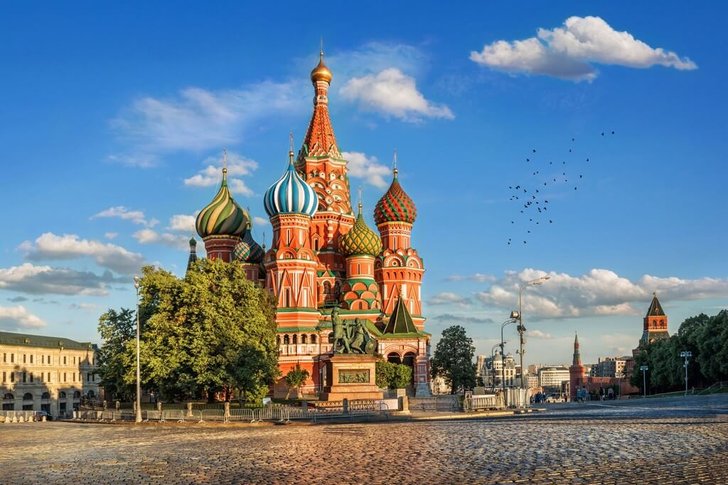
Zaryadye Park
Public space in the historical district of the capital of the same name. Construction was carried out in 2014-2017, after the demolition of the Rossiya Hotel located on this site. There are 4 landscape zones of Russia represented in the park. The total number of trees planted is 752, bushes - about 7 thousand. In different parts of Zaryadye there are zones with an artificial microclimate. In 2018, a concert hall was opened in the park.

Moscow City
The business district of the capital, consisting of modern skyscrapers of futuristic design. The project is unique both for Russia and for the whole of Eastern Europe. The highest tower of the Federation complex reaches a height of 235 meters, other buildings have also been given their own names. Moscow City was nicknamed "Moscow Manhattan", the quarter was conceived as the Russian analogue of the London and New York business districts.
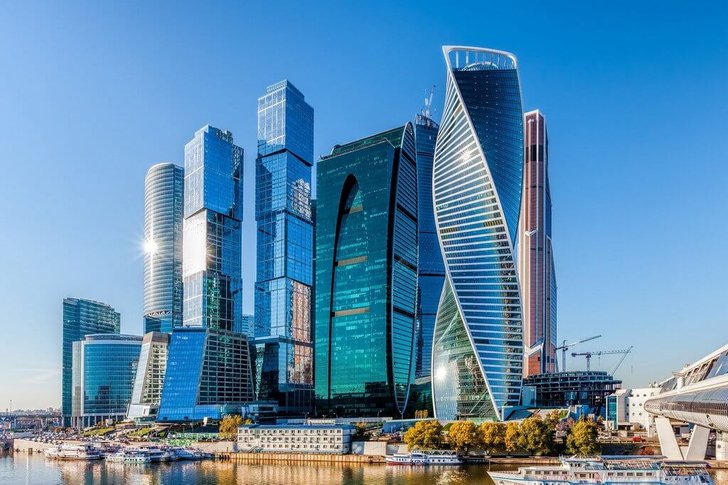
Cathedral of Christ the Savior
The Cathedral of Moscow, where the Patriarch conducts divine services. The temple was built in honor of the victory in the Patriotic War of 1812 according to the design of Konstantin Ton, the work lasted more than forty years. During the Soviet era, the building was blown up, and the Palace of Soviets appeared in its place, and later, the Moskva pool. The cathedral was rebuilt in 1994-1997. and now has the maximum external resemblance to the original.

Novodevichy Convent
The oldest convent in the capital. According to legend, it stands on the spot where, during the reign of the Golden Horde, girls were selected to be sent into slavery. The monastery was founded in 1524 by Vasily III. Subsequently, many royal persons, as well as girls from princely and boyar families, took the tonsure in the monastery. Many came here against their will. In architectural terms, the monastery is a real fortress with powerful walls.
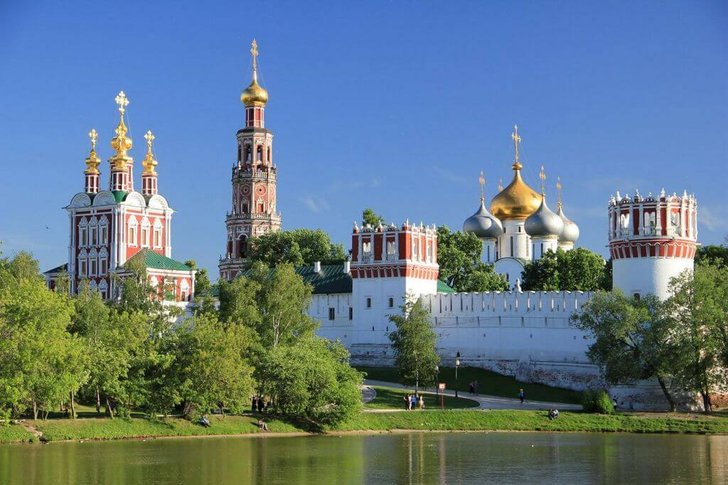
Church of the Ascension in Kolomenskoye
Temple of the 16th century on the banks of the Moskva River in the territory of the park complex in Kolomenskoye. Presumably, the Italian architect Petrok Maly took part in the construction of the building. The church is one of the first examples of stone hipped temples in Rus'. The structure was built in the form of an equal-ended cross with a 62-meter bell tower. The architecture of the temple is considered unique.
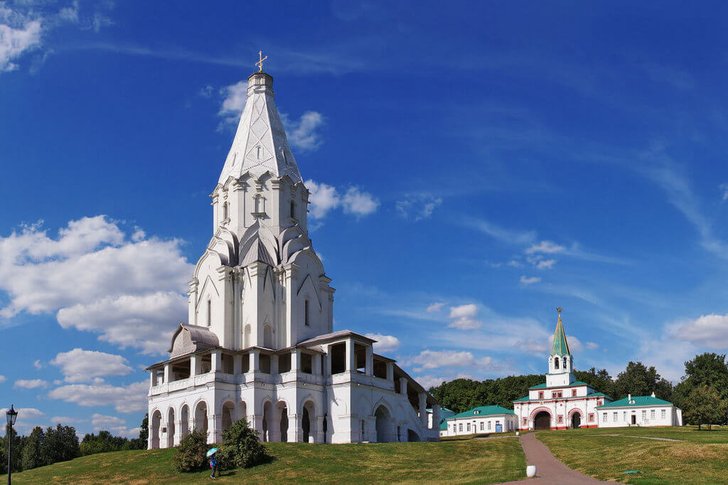
Cathedral of the Immaculate Conception of the Blessed Virgin Mary
The main Catholic cathedral in Moscow, built in the Neo-Gothic style at the expense of the Polish community. The main buildings were erected at the beginning of the 20th century according to the project of F. O. Bogdanovich-Dvorzhetsky. The cathedral is a typical example of the architecture of Catholic churches - lancet arches, figured towers directed upwards, colored stained-glass windows. The temple regularly hosts organ music concerts and other cultural events.
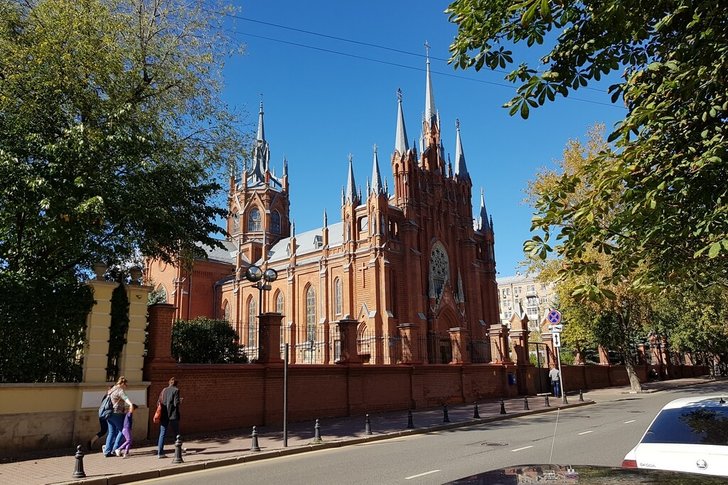
Museum-Reserve Tsaritsyno
The palace and park ensemble, covering an area of more than 100 hectares, is located in the south of the capital. All buildings were created in the 18th century in the pseudo-Gothic or Russian Gothic architectural style. Previously, the ensemble served as the royal residence. Today, the park houses exhibitions, museums, concert halls, greenhouses. Thanks to the beautiful landscape, the Tsaritsyno ensemble has become a popular place for wedding photo shoots.
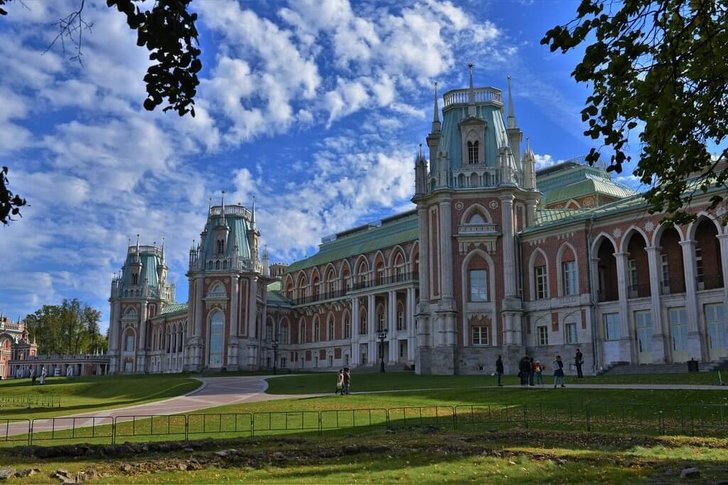
Kolomna Palace
The wooden palace in Kolomenskoye Park, which belonged to Tsar Alexei Mikhailovich. It opened to the public in 2010. The building was founded in the 17th century, its appearance was conceived in such a way as to emphasize the power of the Russian state and the greatness of the tsar. The interior decoration was opulent and luxurious. Under Catherine II, the palace was dismantled, but its detailed drawings were previously made. According to these drawings, the complex was completely restored later.

Kremlin in Izmailovo
An attraction of the New Age in the spirit of Russian architecture of the 17th century, a stylized residence of Tsar Alexei Mikhailovich. The ensemble was built according to old sketches and drawings. The Kremlin appeared in 2007 near Partizanskaya metro station. There are craft shops, museums, taverns, a church on the territory. The Kremlin was designed by A.F. Ushakov as an attraction to attract tourists.
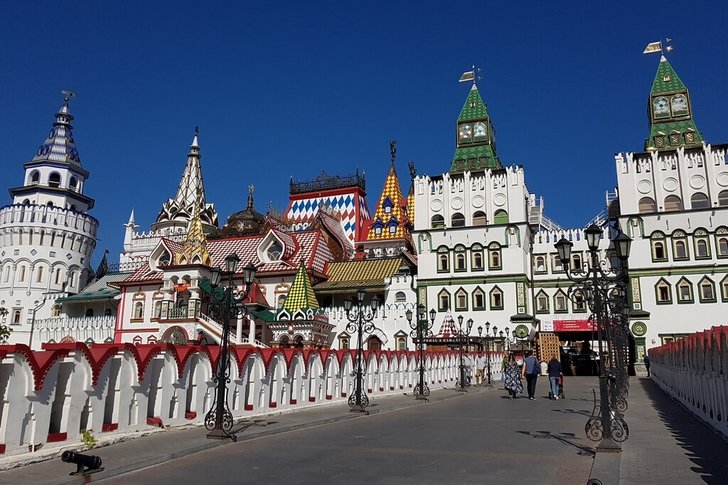
Manor Kuskovo
The mansion of the XVIII century, which belonged to the count family of Sheremetevs. The magnificent estate, surrounded by a landscaped park, was used for magnificent receptions, balls, festivities and theatrical performances. The museum on the territory of the complex exhibits one of the world's largest collections of ceramics. Exhibitions, concerts, festivities in old Russian traditions are constantly held in Kuskovo.
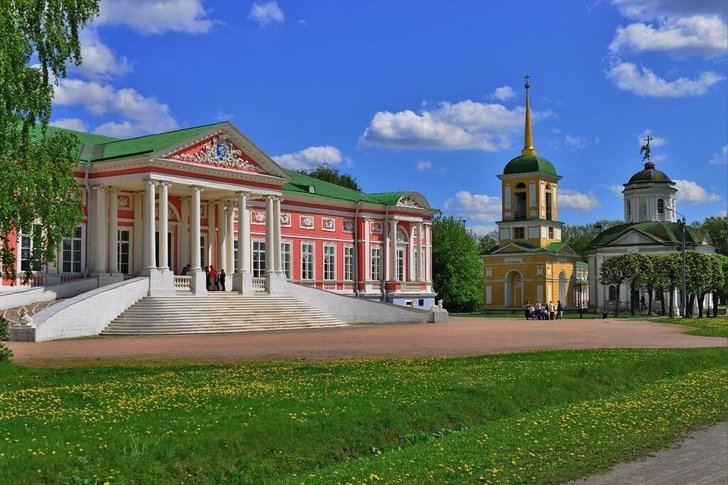
Krutitsy Compound
An architectural monument of the 17th century in the Tagansky district of the capital. Since 1991, it has been serving as a patriarchal residence. The Department for Youth Affairs of the Russian Orthodox Church is also located here. The history of the place began in the 13th century. At first, a monastery was located here, and then the residence of higher clergy. Krutitsy Compound is a place where you can imagine what Moscow looked like in past centuries.

Grand Theatre
The main opera stage of the country and one of the best theaters in the world. The theater was built in 1825, but in 1853 the building burned down. Three years later, the Bolshoi was rebuilt. Large-scale reconstructions were carried out in 1886-1893, in 1958 and in 2005-2011. The monumental building of the theater is decorated with massive columns, the interior decoration is striking in luxury. The crystal chandelier in the main auditorium deserves special attention.
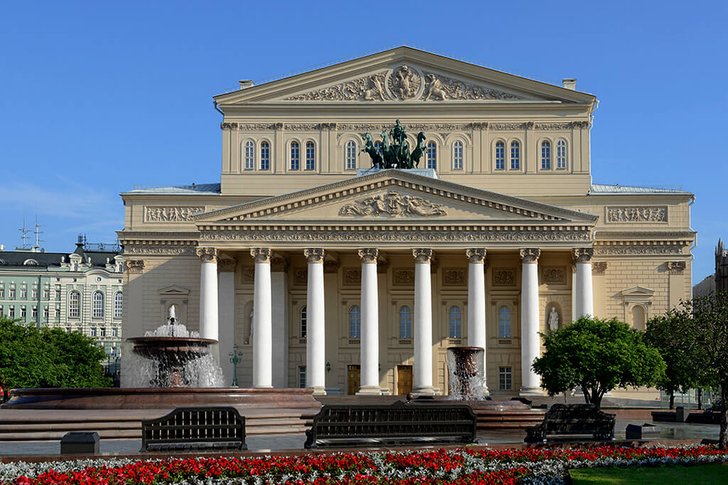
State Tretyakov Gallery
An art museum with a rich collection, founded by the merchant family Tretyakov. In 1861, in his will, Pavel Tretyakov transferred the family gallery to the city and determined the amount of money for its maintenance. In 1893, the museum officially opened to the public. The Tretyakov Gallery is the largest (more than 180 thousand exhibits) collection of Russian painting, engraving, and icon painting.

Armory and Diamond Fund
They are located in the same building on the territory of the Moscow Kremlin. The Armory has been functioning as a museum since 1806. Here are stored art and artifacts, both made in local workshops and donated by embassies of other countries. The Diamond Fund is an impressive exhibition of masterpieces of jewelry art. The best examples of the collection date back to the 18th-20th centuries. In addition, the exposition presents precious stones and nuggets with a rich history.

State Historical Museum
It is located on Red Square and is one of the main metropolitan museums. Collections covering all eras in Russian history from ancient times to the 20th century are exhibited in countless halls. Extensive expositions relating to the history of other states are also presented. The museum was founded by order of Alexander II in 1872. In 1990, the building was included in the UNESCO heritage list along with Red Square.
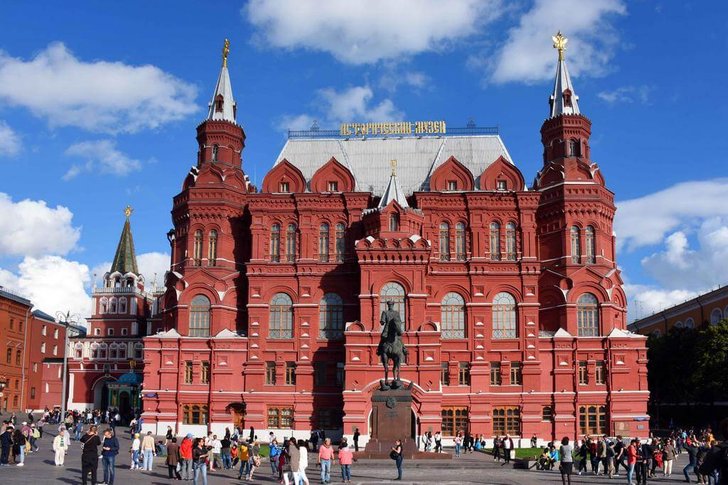
Moscow Nikulin Circus on Tsvetnoy Boulevard
The circus was built in 1880 with the money of the merchant Danilov. From the very opening, the administration tried to invite only the best teams and attract more visitors to the performances. In 1996, in honor of the 75th artist Yu. Nikulin, the circus was given the name "Moscow Nikulin Circus on Tsvetnoy Boulevard." The auditorium is designed for 2000 people, modern equipment is used during performances.

Pushkin Museum of Fine Arts
The museum gallery was opened in 1913, the basis of the collection was exhibits from the collection of the Cabinet of Fine Arts and Antiquities of Moscow University. Later, original samples of the culture of Ancient Egypt were acquired. During the 20th century, the museum developed and expanded, and now it contains about 700 exhibits. Various exhibitions of world-famous authors are constantly held in the halls.

Bunker 42 on Taganka
Museum of the Cold War, located at a depth of 65 meters underground. The bunker was built in the middle of the 20th century, it was conceived as a completely autonomous shelter in case of a sudden nuclear strike. A supply of water and food was stored here for a long time. The entrance to the museum is a one and a half ton door, behind which a long staircase begins. Visitors can explore the interior of the bunker during a guided tour and watch a film about the Cold War.

Victory Park on Poklonnaya Hill
Park complex with memorials dedicated to the Victory in the Great Patriotic War 1941-1945. Before construction began in 1987, the hill on Poklonnaya Gora was partially demolished. The park officially opened in 1995. The central monument is an obelisk crowned with a statue of the goddess Nike, 141.8 meters high. In 2009-2010 the Eternal Flame burned here, transferred for the period of reconstruction from the Alexander Garden.

Sparrow Hills
Sparrow Hills are considered the main observation deck of Moscow, from where you can see the valley of the Moskva River, Luzhniki, Stalinist skyscrapers and skyscrapers of Moscow City. Nearby is the building of Moscow State University. The park zone of Sparrow Hills is a great place for walking, cycling and rollerblading, jogging. Moscow bikers have been gathering near the observation deck for many years.

Sports complex "Luzhniki"
Opened in the 50s of the last century, it was rebuilt many times. The area exceeds 180 hectares. Hosted some events of the 1980 Olympics. In the 90s, it turned into a huge clothing market, which was liquidated by 2003. Now the complex consists of dozens of objects, including a sports arena for 78,000 seats, football fields, tennis courts, swimming pools and a golf academy. The final match of the 2018 FIFA World Cup was played at Luzhniki Stadium.

Moscow subway
The largest subway in the territory of the former USSR. The first line was launched in 1935, it connected Sokolniki and Park Kultury. Currently, 15 lines have been laid with a length of almost 400 km. Of the 230 active stations, 48 are recognized as objects of Russia's cultural heritage. The design of some metro halls resembles museums; there are guided tours, including night ones.

Moscow Zoo
One of the oldest in Europe, has been welcoming visitors since 1864. Currently, the zoo contains about 6 thousand individuals. They represent over a thousand animal species. The area is divided into themes. There are both open expositions and enclosures, as well as closed ones. Anyone can arrange guardianship of the animal they like, finance its maintenance and receive a number of privileges. The living symbol of the zoo is Samson the giraffe.

VDNH
A large park area in the North-East of the capital with numerous exhibition pavilions, well-groomed alleys, fountains, cafes, concert venues. VDNKh is one of the most popular weekend getaways for citizens. Here you can visit the aquarium, the historical pavilion, innovative exhibitions, farmers' markets, a theater and even a "port" with a swimming pool and a beach. There are many cyclists, roller skaters and other athletes at VDNKh.

Ostankino Tower
The TV tower is another important symbol of the capital. The tower provides TV broadcasting to the whole of Russia, TV studios and offices of the main channels are located here. The building reaches a height of 540 meters. The Ostankino Tower was built in the period 1963-1967, at that time it was considered the tallest building in Europe. For visitors, there are special excursions to the tower with a visit to the observation deck.

triumphal gate
Arched gates on Kutuzovsky Prospekt, erected in honor of the victory in the Patriotic War of 1812. The structure was built according to the design of the architect Beauvais in 1829-1834, later in 1936 the arch was dismantled. The reconstructed gate reappeared on the avenue only in 1968. The inscription on the upper part of the old structure glorified the deeds of Alexander I in Russian and Latin, the new inscription immortalized the feat of Russian soldiers in 1812.

Stalin skyscrapers
Seven high-rise buildings built in the pompous "Stalinist Empire" style in the middle of the 20th century. These unique buildings, as planned by the leader, were to symbolize the power and greatness of Moscow and the entire USSR. The buildings house the University of Moscow State University, the Ministry of Foreign Affairs, hotels, residential apartments. In Soviet times, housing in these elite houses was distributed only to prominent scientists and statesmen.
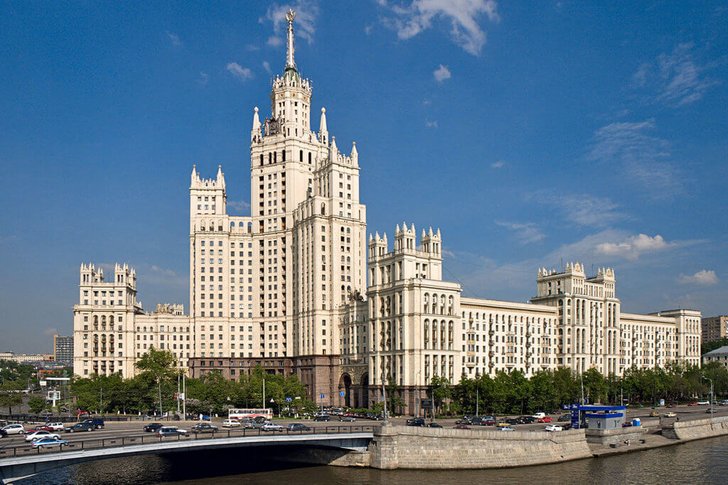
State Department Store (GUM)
It is located on Red Square and is one of its main attractions. The history of the building began in the 19th century with the opening of shopping arcades. Over the course of the 20th century, GUM gradually became the main and most coveted store in the country - all business travelers strive to get into it in order to purchase scarce goods. Nowadays, GUM is a territory of expensive boutiques, historical shops and author's showrooms.

Street Old Arbat
The famous walking boulevard of the capital, where, surrounded by charming Moscow mansions of previous centuries, street performers perform and artists draw portraits. A large number of souvenir shops, restaurants and small interesting museums are concentrated on the Arbat. The street is included in the mandatory visiting program for foreign tourists, so here they can be seen in considerable numbers.

Hermitage Garden
A small park in the city center, a popular place for walking among locals. The garden was founded by entrepreneur and philanthropist Y. Shchukin at the end of the 19th century. The last major renovation took place in the late 1990s. XX century. There are three theaters and an open stage for summer concerts on the territory of the park. In the warm season, festivals and various events are often held here, attracting many visitors.
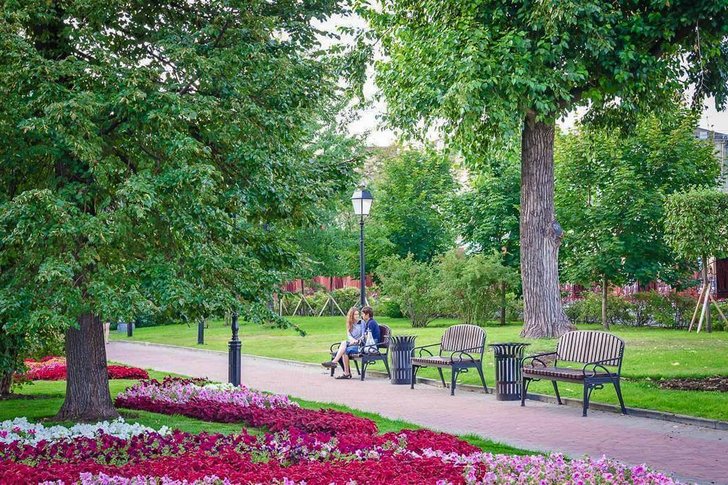
MUZEON art park
A large area of arts, located on the Crimean embankment. The art zone includes outdoor exhibitions, landscaped gardens, fountains, contemporary art objects and numerous walking paths. Krymskaya Embankment itself is a picturesque pedestrian area on the banks of the Moskva River, a cozy and romantic place that quickly gained popularity among tourists and Muscovites themselves.

Art Cluster "Red October"
Numerous art workshops, galleries, design studios, exhibition halls occupying the former building of the Krasny Oktyabr confectionery factory. This is a kind of bohemian center of the capital, where events are constantly taking place with the participation of the fashionable public and famous people. The red brick factory building itself is a classic example of industrial architecture of the early 20th century.
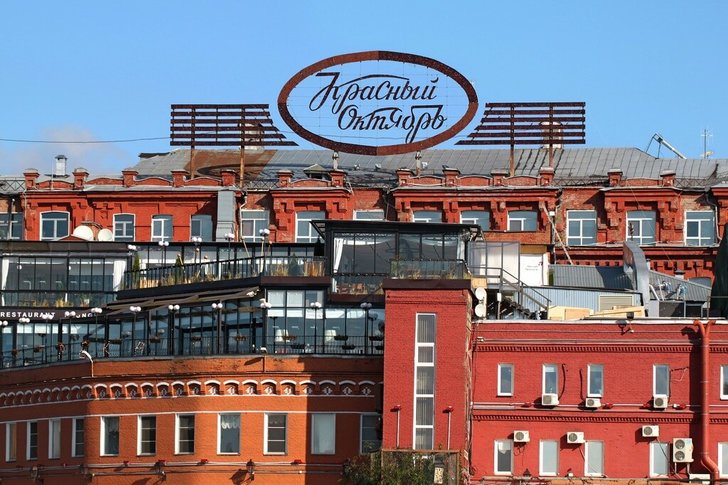
Gorky Park
The park is located on the embankment of the Moscow River. In recent years, the place has changed and has become a point of attraction for the advanced public. It constantly organizes events dedicated to the protection of the environment, vegetarian festivals, skateboarding competitions and other events. The park often becomes a venue for large-scale city holidays. In winter, a skating rink has been operating on the territory for several years.
